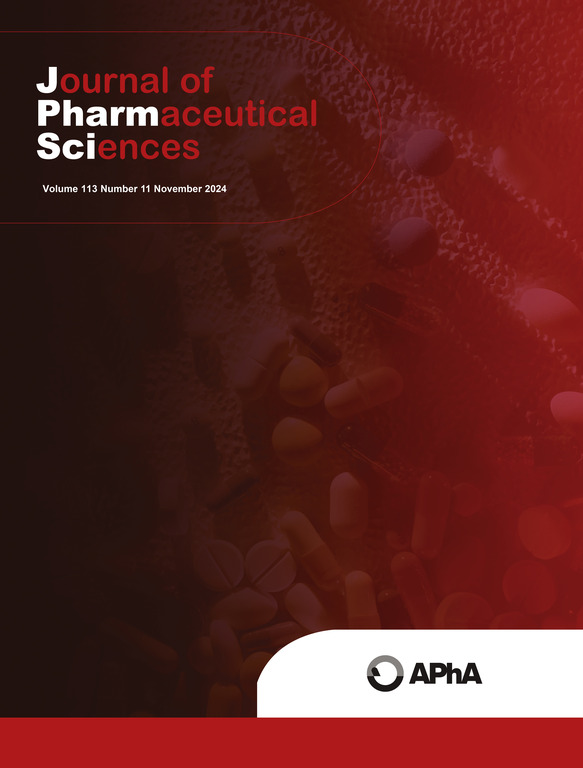同步辐射计算机断层扫描与基于人工智能的图像分析相结合,用于喷雾干燥无定形固体分散颗粒的高级表征。
IF 3.8
3区 医学
Q2 CHEMISTRY, MEDICINAL
引用次数: 0
摘要
颗粒工程旨在设计具有特定性能的颗粒。更深入地了解颗粒形成与材料属性和工艺条件的关系,对于加强粉末特性知识和提高建模能力至关重要。新的替代性粉末表征技术可以提供新颖、更准确的颗粒特性测量方法,从而提供更先进的表征信息。在此背景下,我们介绍了一个案例研究,通过改变工艺条件生产的喷雾干燥非晶固体分散粉末,采用了成熟的简易方法(即激光衍射、扫描电子显微镜图像分析、堆积密度和攻丝密度以及气体吸附)以及结合同步辐射计算机断层扫描(SyncCT)和基于人工智能的图像分析的新方法进行表征。SyncCT 用于将喷雾干燥颗粒分类和量化为空心球和实心颗粒,从而更详细地衡量颗粒形状的质量,因为它们对下游加工的影响不同。此外,SyncCT 还测量了空心颗粒的壁厚以及内外颗粒表面积。总之,SyncCT 的粉末表征数据显示出与通过药典技术获得的数据相似的趋势,并提供了有关颗粒形状的额外质量测量,显示出这种新型先进表征方法的前景。本文章由计算机程序翻译,如有差异,请以英文原文为准。
Synchrotron computed tomography combined with AI-based image analysis for the advanced characterization of spray dried amorphous solid dispersion particles
Particle engineering aims to design particles with specific properties. A deeper understanding of how particle formation relates to material attributes and process conditions are critical to strengthen knowledge on powder properties and enhance modeling capabilities. New, alternative powder characterization techniques can offer novel and more accurate measures for particle properties, giving more advanced characterization information. In this context, a case study is presented in which spray dried amorphous solid dispersion powders produced by modifying process conditions were characterized by both well-established compendial methods (i.e., laser light diffraction, SEM image analysis, bulk and tapped density, and gas adsorption), as well as a new method combining synchrotron computed tomography (SyncCT) with AI-based image analysis. SyncCT was used to classify and quantify the spray dried particles as hollow spheres and solid particles, giving a more detailed quality measure of the particle shape, as they impact downstream processing differently. Moreover, hollow particle wall thicknesses, as well as internal and external particle surface areas were measured by SyncCT. Altogether, powder characterization data from SyncCT show similar trends to that obtained from compendial techniques and giving additional quality measure regarding particle shape, showing promise of this new and advanced characterization method.
求助全文
通过发布文献求助,成功后即可免费获取论文全文。
去求助
来源期刊
CiteScore
7.30
自引率
13.20%
发文量
367
审稿时长
33 days
期刊介绍:
The Journal of Pharmaceutical Sciences will publish original research papers, original research notes, invited topical reviews (including Minireviews), and editorial commentary and news. The area of focus shall be concepts in basic pharmaceutical science and such topics as chemical processing of pharmaceuticals, including crystallization, lyophilization, chemical stability of drugs, pharmacokinetics, biopharmaceutics, pharmacodynamics, pro-drug developments, metabolic disposition of bioactive agents, dosage form design, protein-peptide chemistry and biotechnology specifically as these relate to pharmaceutical technology, and targeted drug delivery.

 求助内容:
求助内容: 应助结果提醒方式:
应助结果提醒方式:


